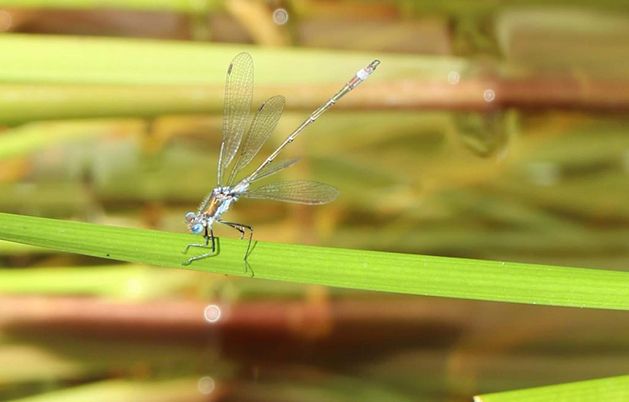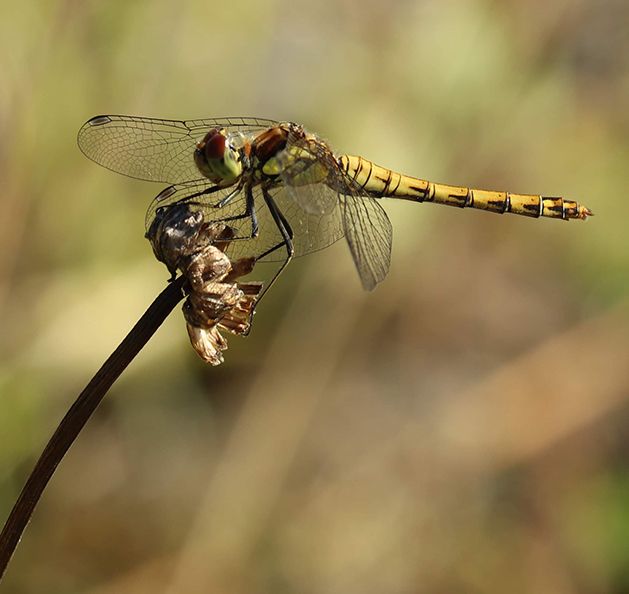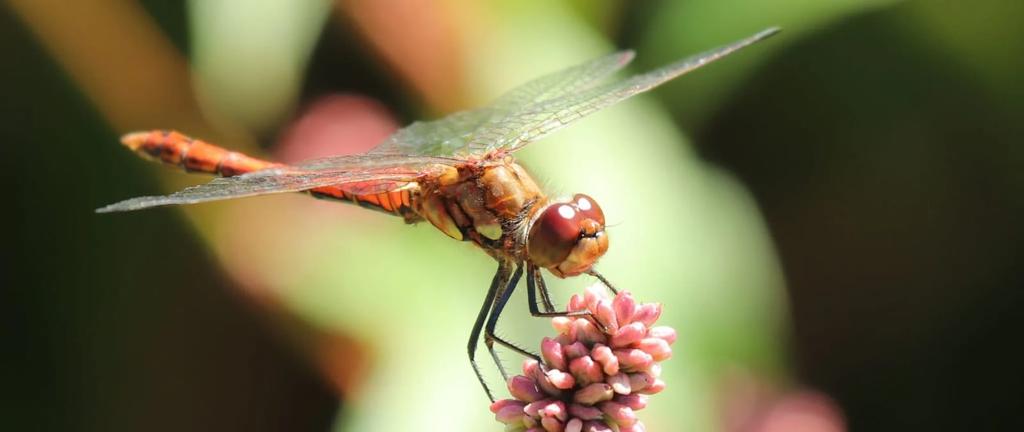THESE are images of creatures so beautiful that they seem magical. If you were to invent an insect to grace a magical kingdom, you couldn’t come up with a more brilliant one. Hovering on almost invisible wings, brightly coloured yet somehow translucent at the same time.
Completely unperturbed by people – they’ll buzz around your head like mini-fairies.
Last week Dúlra reported how grasshoppers have become rare; well, dragonflies are also largely beyond the reach of today’s younger generations.
But there is hope. These phenomenal winged creatures are certainly less common today than they were decades ago, but it’s not like they have gone for good like the corncrakes that bred all over West Belfast when Dúlra was young. They just need the right conditions and they’ll magically reappear.
These dragonflies were photographed on the lower slopes of the Belfast hills just outside West Belfast this week by the famous pet saviour Debbie ‘Doolittle’ Nelson. And at a small pool which had just been created as a wildlife haven less than a year ago. Six different species burst forth from the water and left the small band of environmentalists developing the site spellbound.
There isn’t a person alive who wouldn’t be mesmerised when they see a dragonfly, which are so big they’re often called the birdwatcher’s insect.
All those people who find flies annoying because they fear they’re going to stick in their hair or bite them will make an exception for the dragonfly. They're as beautiful as a butterfly – perhaps more so.
In recent years they’ve retreated as our ponds have been drained, meaning that few city children will have experienced one – unless they live in Ligoniel. Last month Dúlra saw several during a walk along the upper pool. Neon blue, they were gliding among the reeds a foot above the water. You’d think the Waterworks would also be a haven for dragonflies – but Dúlra hasn’t seen any there. Maybe he needs to get down among the reeds rather than sticking to the paths.

The pool where Debbie photographed so many dragonflies this week is proof that, given a chance, they’ll reappear as if by magic and brighten up the lives of anyone who visits.
There are an incredible 5,300 dragonfly species worldwide, with 32 of them in Ireland – one for each county – which is amazingly the same number of butterfly species we have. Who said our counties were created at random?
But that number looks set to increase as global warming brings more dragonflies – snáthaid mhór in Irish – to our shores, although we may lose others that head further north.

August is the month when most of them take to the wing. Some species can take five years to grow in the water and fly for just a few days. With all that time to prepare, no wonder they’re glorious!
• A reader from North Belfast writes that the once-beautiful trees on Donegall Park Avenue have been coppiced, presumably by the City Council for safety reasons, and are now a sorry sight. “This used to be one of the nicest streets in the city, but at the start of spring the tall trees that line both sides of the road were cut right back to their trunks. Even now, towards the end of summer, they haven’t recovered. There’s no point having trees if we don’t allow them to grow,” the resident writes.
Dúlra agrees. Another tragic story this week highlights how the ‘safety’ argument is often carte blanche to damage nature. A walrus became famous for travelling from its Arctic home all the way to Britain, Holland, Denmark and Sweden before heading to Norway a few weeks ago to spend the summer lounging about. It was promptly shot dead. Why? Because people kept approaching it in an Oslo fjord, and instead of warning them to stay away, the government decided to ‘euthanise’ the walrus.
As one biologist said, they chose to kill this wonderful animal because people did not behave properly with it. Tragic.
If you’ve seen or photographed anything interesting, or have any nature questions, you can text Dúlra on 07801 414804.







